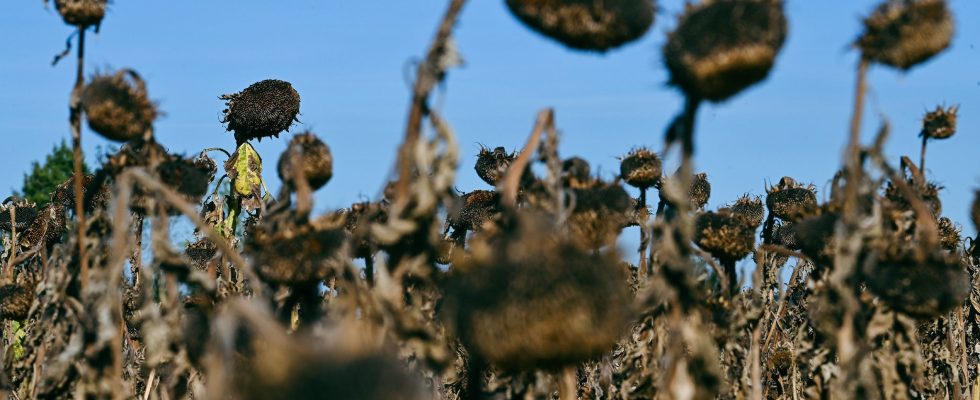“The world has come to know its hottest start to june on recordafter a month of May very close – barely 0.1°C – to the past temperature record”, recently reported the scientists of the Copernicus service on climate change (C3S). during the summer, causing strong tensions on water resources? L’Express reviews three possible black scenarios: the first on small town water supplythe second on excessive warming of rivers and the last on the drying up of crops.
Parched meadows, low yields for corn crops… Will the black scenario experienced in 2022 be repeated this summer? In the northern half of France, for the moment, the trend seems rather good with regard to wheat or barley. Professionals anticipate average returns from previous years. But in the south of the country, the situation is more critical, the end of winter having left very dry soils and very low water tables.
For agroclimatologist Serge Zaka, very present on Twitter, the risk of drought cannot be ruled out. Indeed, two or three weeks without rain would be enough to dry out the soil and lose the moisture gained in recent months. The worst scenario would be that of a heat dome blocked over Europe, resulting in a “hairdryer” effect that is harmful to plants.
Fortunately, we are not there yet. According to the seasonal forecasts of Météo France, the most likely scenario shows warmer than normal conditions throughout France, and wetter than normal in the south, from the Pyrenees to the Mediterranean basin. But this modeling work does not allow very precise conclusions to be drawn on the summer period, because according to the organization, “a particular event, lasting between a few days and a few weeks, can only be anticipated a few days in advance” .
“For the moment, the situation for summer crops cannot be described as bad. But we are at the stage where irrigation is just starting for them”, underlines Philippe Stoop, director of research and innovation at ITK. , an editor of decision support tools for agriculture. However, given the situation, there is a risk of quite severe irrigation restrictions, which could affect crop yields. On this level, the trend is deteriorating from year to year. “In general, for three quarters of France, we know that we will have increasing water problems due to climate change. More specifically, we are facing an increase in average temperatures, which creates more evaporation from plants and soil during the summer. At the same time, in the Mediterranean region, rainfall is increasingly concentrated in autumn and spring. As a result, it is water that is not available in summer when where crops need it the most”, summarizes Philippe Stoop.
Wheat or corn?
Finding the parade will not be easy. In the southwest of the country, planting wheat instead of corn – a track often put forward – is not necessarily a good idea. Admittedly, wheat grows mainly during winter and spring, two periods during which the rains are more abundant. As a result, its growth cycle comes to an end when the drought begins. But for an equal amount of water consumed, it produces much less material than corn. In addition, its cultivation could interfere with the replenishment of groundwater during the winter. However, the protection of these precious reserves is becoming a hot topic. We saw it with the extremely violent protest against the mega basin projects.
“On the subject of surface storage, an amalgam is often made with more arid countries in which unreasonable withdrawals, carried out in deep aquifers, have led to a loss of water capital. This would not be the case in France , because of the technical provisions provided. But this somewhat complex system requires a minimum of confidence in the regulatory authorities. Unfortunately, this is increasingly lost”, deplores Philippe Stoop.
To see the future more serenely, France will have to carry out inventory work on a regional scale. What are the water needs, for example, for the Rhône and Garonne basins? At the same time, it will also be necessary to develop crops, by integrating more leguminous plants or species more adapted to global warming such as sorghum, while questioning the new irrigation needs. This could indeed become necessary for grasslands intended for feeding ruminants, which are increasingly suffering from climate change.
The scale of the task is immense. “For the time being, the French agricultural sector is lagging far behind in terms of adaptation,” observes Philippe Stoop. We must therefore move forward and not let ourselves be won over by the summer torpor.
